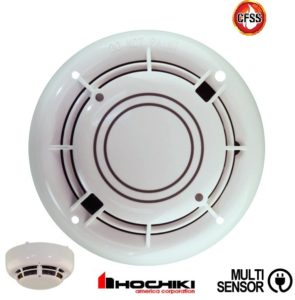Fire Detection & Extinguishing
When we think of fire a few things definitely crop into the mind like having smoke detectors and having an escape plan. While these can be valuable there are other things that can make the fire and safety plans more secure. The tool that we are talking about in fire safety, prevention and management is automation.
A fire event can happen to anybody or anyone, it is completely up to us to remain pro-active on the fire safety side, using all the tools at our disposal. Home automation is not just good technology that simplifies our lives but it can actually play a very important part in our lives.
Causes and Prevention.
The best strategy to stay safe from fires is to adopt measures that are preventative. Home automation provides fire prevention support in several helpful ways. One of the ways by which thing catch fire at home, is when people forget to turn off their electrical appliances such as coffee pots, clothes iron and toaster ovens. These account for substantial amount of home fires each year. By incorporating home automation you will be able schedule turn off or turn off enabled appliances from a smartphone, tablet or PC, through which you will be able to prevent ignition caused by home appliances.
Mostly fires occur at homes when the occupants are away from home. In such cases, there is very little we can do to prevent them. Having said that, by automating the scope of preventing such fires are increased after integration of home security and home automation system, you can do something the minute you get a fire alert. In such a scenario, you can remotely switch off the air conditioning and the heating system. As we all know, fire spreads rather quickly, it takes only a few minutes for a home to be engulfed in flames. Fire needs oxygen to burn and running an air-conditioning system is a lot like fanning the flame. But, if take the automatic alert which you receive on your device, it is an opportunity to turn off the air system and buy a little extra time when every second is precious.
Use of Fire Extinguishers.
Another way in which to prevent the fires from spreading are fire-extinguishers. There are different kinds of extinguishers available in the market. Traditionally there are three types of extinguishers found in use in today’s fire service
- The most common kind of extinguisher in the market is the pressurized water extinguisher. The extinguisher works by adding water to the can, the using air or nitrogen as pressurizing agent. Because of their ease and portability, they are a great tool for overhaul and miscellaneous fires (Class A fires).
- The next type is the dry chemical extinguisher is capable of extinguishing and suppressing Class A, B and C fires. The dry chemical extinguisher commonly uses sodium bi-carbonate mixed with an inert material to reduce moisture absorption during storage. These extinguishers work by breaking the chain reaction as well as separating the fuel from oxygen supply. They are great for extinguishing stove and small grease fires.
- The carbon dioxide extinguisher is the third and often times less seen extinguisher. This extinguisher is easily identified by its large bell or nozzle. It is considered a clean extinguisher because carbon dioxide gas leaves little residue. Carbon-di- oxide extinguishers work by displacing available oxygen to the fire. These are rated for class B & C fires.
Types of Fires
- Class A: Involves wood, paper and the like
- Class B: Involve inflammable liquids like cooking fats and paint thinners
- Class C: Electrical fires
- Class D: Highly reactive metals such as Sodium and magnesium

